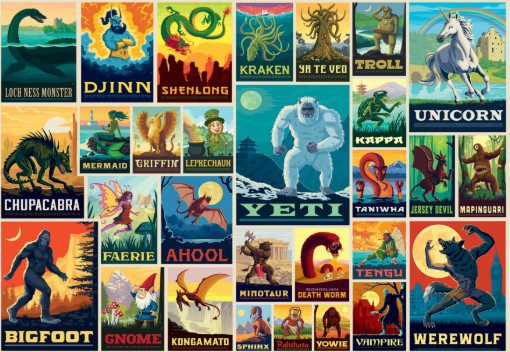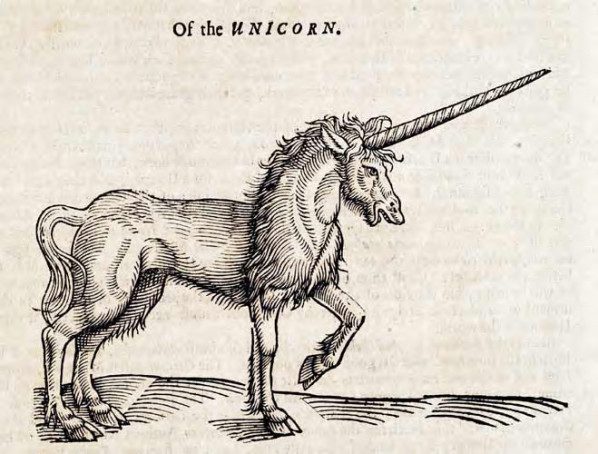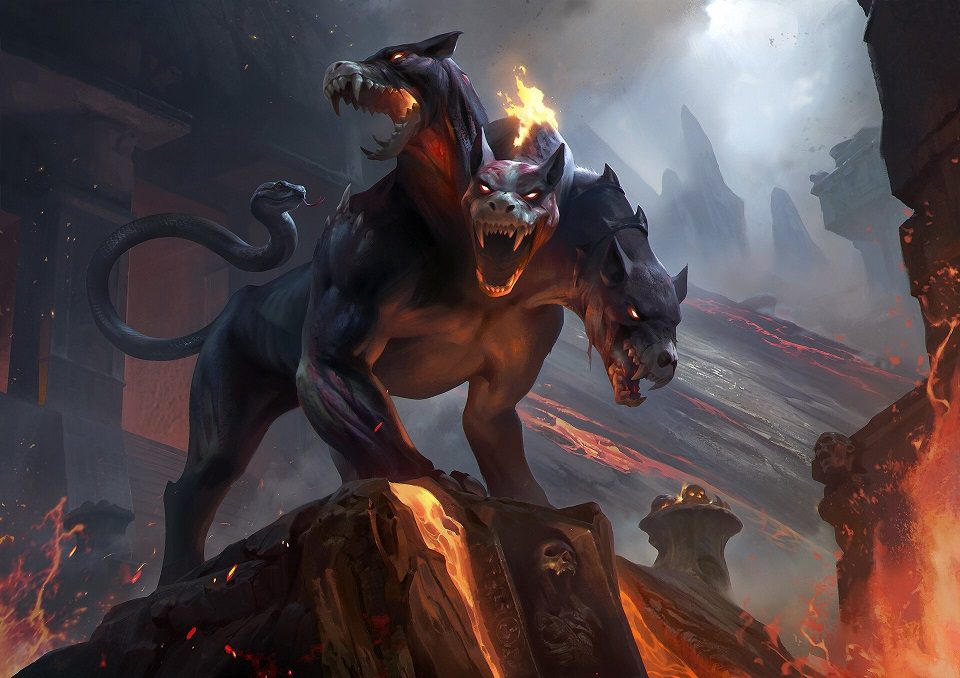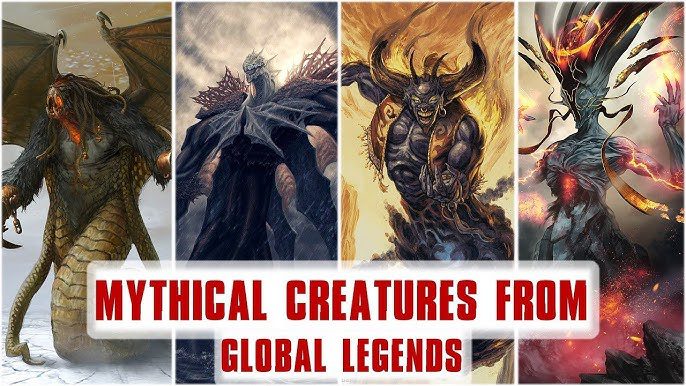Top 10 Mythical Beasts In The World
Introduction
Mythical beasts have captivated human imagination for millennia, embodying our fears, desires, and the mysteries of the unknown. These creatures, woven into the fabric of legends and folklore, transcend cultural boundaries, appearing in diverse forms across the globe. From the majestic dragons of Eastern and Western traditions to the enigmatic sphinx of ancient Egypt, these beings have played pivotal roles in shaping our understanding of the world and our place within it.
These fantastical creatures are more than mere figments of imagination; they often symbolize deeper concepts, such as courage, wisdom, chaos, or the delicate balance between humanity and nature. Their enduring presence in art, literature, and mythology speaks to their timeless appeal and the power of storytelling to convey profound truths. Join us as we embark on a journey to explore 10 of the most iconic mythical beasts, delving into their origins, characteristics, and the enduring legacy they hold in our collective consciousness.

Dragons: A Fiery Legacy
Mythical beasts dragons, perhaps the most iconic of all mythical beasts, have soared through the imaginations of cultures worldwide. From the fire-breathing behemoths of European legends, often depicted as symbols of power and destruction, to the benevolent, serpentine dragons of Asian mythology, representing wisdom and good fortune, these creatures embody a duality that fascinates and inspires. Their origins are rooted in ancient tales, with depictions varying wildly across different societies and time periods.
Griffin: Guardian of Treasures
The mythical beasts griffin, a majestic creature with the body of a lion and the head and wings of an eagle, has been revered across cultures as a symbol of strength, courage, and guardianship. Originating in ancient Near Eastern art, the griffin was often depicted as a protector of valuable treasures and a powerful symbol of divine power. This dual nature, combining the king of the beasts and the king of the sky, bestowed upon the griffin an aura of unparalleled majesty and authority.
Phoenix: Rebirth and Immortality
Born from flames, the mythical beasts phoenix is a powerful symbol of rebirth, renewal, and immortality. This magnificent bird, found in Greek and Egyptian mythology, is said to live for centuries, only to perish in a burst of fire and emerge from the ashes, reborn and rejuvenated. The phoenix embodies the cyclical nature of life, death, and resurrection, offering a message of hope and the promise of eternal life.

Unicorn: Symbol of Purity
The mythical beasts unicorn, a legendary horse with a single, spiraling horn on its forehead, has captivated imaginations for centuries. Often depicted as a symbol of purity, innocence, and grace, the unicorn appears in the myths of various cultures, from ancient Persia to medieval Europe. Its elusive nature and association with virtue have made it a popular figure in art, literature, and heraldry.
Centaur: Bridging the Human and Animal Worlds
Mythical beasts centaurs, with their unique anatomy of a human torso joined to the body of a horse, represent a fascinating blend of human and animalistic traits. These creatures from Greek mythology have been portrayed in various ways, embodying both civilized wisdom and untamed wildness. Their duality has made them a compelling figure in art and literature, exploring themes of nature, civilization, and the complexities of the human condition.
Minotaur: A Monster of the Labyrinth
The Mythical beasts minotaur, a fearsome creature with the head of a bull and the body of a man, is one of the most iconic monsters from Greek mythology. Confined within the labyrinth, this creature was a symbol of savagery and brutality, demanding a terrible tribute. The myth of the Minotaur continues to resonate, serving as a powerful metaphor for humanity’s struggle against its darker impulses.

Cerberus: Guardian of the Underworld
Mythical beasts cerberus, the multi-headed hound of Hades, stands as a formidable guardian of the Underworld in Greek mythology. With the daunting task of preventing the dead from leaving and the living from entering without permission, Cerberus embodies the finality of death and the fearsome power of the realm beyond. His depiction as a monstrous, multi-headed dog has made him a lasting symbol of the dark and mysterious world of the afterlife.
Medusa: The Gaze of Stone
Mythical beasts medusa, a Gorgon from Greek mythology, is infamous for her hair of living snakes and the petrifying gaze that turns any who look directly at her into stone. Her myth has been interpreted in various ways, from a tale of a monstrous villain to a symbol of female rage and power. Medusa’s image continues to fascinate and terrify, solidifying her place as a powerful and enduring figure in mythology and popular culture.
Hydra: The Multi-Headed Serpent of Lerna
The Mythical beasts hydra, a serpentine water monster from Greek mythology, is famous for its multiple heads and the ability to regenerate them when severed. This formidable creature, dwelling in the swamp of Lerna, was a symbol of resilience and the difficulty of overcoming seemingly insurmountable challenges. Its battles with heroes like Hercules have cemented its place in popular culture as a representation of a seemingly endless threat.
Harpies: Winged Spirits of Wind and Death
Mythical beasts harpies, with their origins in Greek mythology, are often depicted as winged creatures with the faces of women and the bodies of birds. These beings were associated with wind, death, and destruction, often portrayed as snatching things and people. Over time, their image evolved, reflecting various aspects of human nature, from vengeful spirits to symbols of punishment and divine justice.
Conclusion
From fire-breathing dragons to the enigmatic sphinx, mythical beasts continue to hold a powerful place in our imagination. These creatures, woven into the tapestries of diverse cultures, represent humanity’s enduring fascination with the unknown. They symbolize our deepest fears, greatest hopes, and the timeless power of storytelling, reminding us that even in the realm of fantasy, we often find reflections of ourselves.
You Can Also Read: Top 10 Best Dinosaurs in The World
FAQS
Why do mythical beasts capture us?
They tap into our fascination with the extraordinary and unknown, embodying our fears, desires, and questions, exploring themes like good vs. evil, and humanity’s relationship with nature.
How do these beasts reflect our fears and hopes?
They often personify our deepest fears and greatest hopes. Creatures like dragons symbolize our anxieties, while beings like unicorns represent purity and hope, allowing us to confront complex emotions.
What role does storytelling play in preserving their legends?
Storytelling preserves their legends across generations and cultures through various mediums. Retellings add meaning and ensure these fantastical beings remain relevant.
How do cultures shape depictions of these beasts?
Different cultures shape their depictions, imbuing them with unique symbolism. This cultural diversity highlights their multifaceted nature and ability to adapt to different societies.
What universal themes do these legends explore?
These legends explore themes like the struggle between good and evil, life and death, the quest for knowledge, and humanity’s relationship with nature, resonating with fundamental aspects of the human experience.
